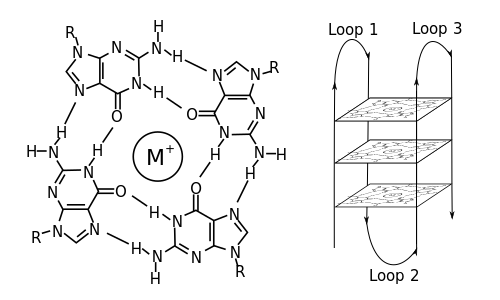Guanine tetrad
In molecular biology, a guanine tetrad (also known as a G-tetrad or G-quartet) is a structure composed of four guanine bases in a square planar array.[1][2] They most prominently contribute to the structure of G-quadruplexes, where their hydrogen bonding stabilizes the structure.[3][4] Usually, there are at least two guanine tetrads in a G-quadruplex, and they often feature Hoogsteen-style hydrogen bonding.[1]
Guanine tetrads are formed by sequences rich in guanine, such as GGGGC.
They can be stabilized by central
Guanine tetrads can also influence recombination, replication, and transcription.[1][2] For instance, guanine tetrads are found in the promoter region of the Myc family of oncogenes.[10] They also function in immunoglobulin class switching and may play a role in the genome of HIV.[11] Guanine tetrads appear frequently in the telomeric regions of DNA.[3]

